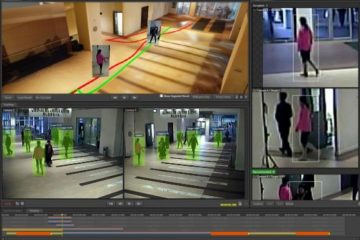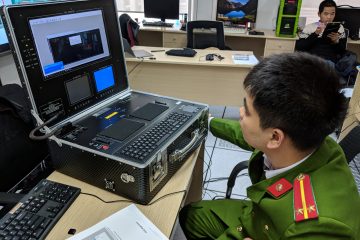High-Resolution Video Processing Techniques

High-resolution video processing techniques have become increasingly crucial in various fields such as surveillance, entertainment, medical imaging, and scientific research. These techniques aim to enhance the visual quality, clarity, and detail of video footage captured at high resolutions. By leveraging advanced algorithms and computational methods, high-resolution video processing techniques enable the extraction of valuable information from video data, leading to improved analysis, interpretation, and decision-making. In this article, we will explore some of the key high-resolution video processing techniques and their applications across different domains.
1. Super-Resolution Imaging
Super-resolution imaging techniques aim to enhance the spatial resolution of low-resolution video footage, resulting in sharper and more detailed images. These techniques utilize advanced algorithms to extrapolate additional details from the available data, effectively increasing the resolution beyond the physical limits of the imaging system. Super-resolution techniques can be particularly useful in surveillance applications, where enhancing the clarity of CCTV footage can improve the identification and tracking of objects and individuals.
2. Frame Interpolation
Frame interpolation techniques are used to generate intermediate frames between existing frames in a video sequence, effectively increasing the temporal resolution of the footage. By estimating the motion between consecutive frames and synthesizing new frames, frame interpolation techniques create smoother and more fluid motion in videos. This can be beneficial in applications such as video playback, where higher frame rates enhance the viewing experience and reduce motion blur.
3. Denoising and Enhancement
Denoising and enhancement techniques aim to remove noise and artifacts from video footage while preserving important details. These techniques utilize advanced algorithms to analyze the spatial and temporal characteristics of the video data and apply filtering and smoothing operations to reduce noise and enhance clarity. Denoising and enhancement techniques are widely used in surveillance, medical imaging, and scientific research to improve the quality of video data for analysis and interpretation.
4. Multi-Frame Fusion
Multi-frame fusion techniques combine information from multiple frames in a video sequence to generate a single high-quality image or video frame. By exploiting redundancy and consistency across multiple frames, multi-frame fusion techniques can enhance the visual quality and detail of video footage. These techniques are particularly useful in applications such as video stabilization, where information from multiple frames is fused to reduce motion blur and camera shake.
5. Deep Learning-Based Approaches
Deep learning-based approaches have revolutionized high-resolution video processing by leveraging the power of neural networks to learn complex mappings between low-resolution and high-resolution video data. These approaches, such as convolutional neural networks (CNNs) and generative adversarial networks (GANs), can effectively enhance the visual quality and detail of video footage by learning from large-scale datasets. Deep learning-based approaches have been successfully applied in various domains, including surveillance, entertainment, and medical imaging, to produce high-quality, high-resolution video output.
Conclusion
High-resolution video processing techniques play a critical role in enhancing the visual quality, clarity, and detail of video footage across different domains. By leveraging advanced algorithms, computational methods, and deep learning-based approaches, these techniques enable the extraction of valuable information from high-resolution video data, leading to improved analysis, interpretation, and decision-making. As technology continues to advance, high-resolution video processing techniques will play an increasingly important role in unlocking the full potential of high-resolution video data across various applications and industries.
















